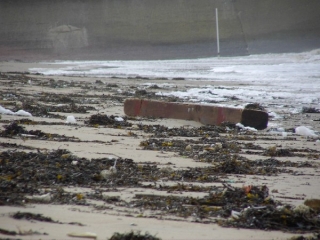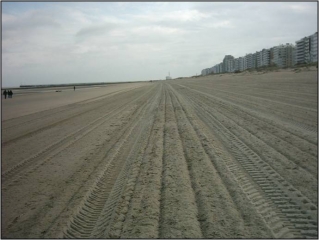This research task aims to collect and integrate all the available data on marine debris in the Belgian marine environment into one multi-purpose and user-friendly database.
The developed database will be constructed in such a way that it will allow in-depth evaluation of the time- and geographic trends of (detailed) debris type, quantity and size in all marine compartments (beach, subtidal seafloor, water column and sea surface) of the Belgian Continental Shelf.
Task 2: Monitoring and validation of the integrated database
- Beach monitoring
-
Identify and select suitable beaches
- Develop a survey schedule
-
- Survey of the Belgian continental shelf
- Sea surface
- Water column and seafloor
- Microplastics in sediment
The results for all above monitoring activities will be used to validate (i.e. to assess the accuracy of existing information) the database developed in research task 1 and to extend the data base with new information such as: large debris items on the sea surface, in the water column and on the seafloor, micro debris in all compartments.
Task 3: Impact/ Effect assessment
Laboratory experiments – effects of microplastics
2 test organisms
3 Experiments
- Experiment 1: uptake and accumulation of microplastics
- Exposure to microplastics collected in sampling campaigns
- Dissection and staining (or digestion of organic matter)
- Exposure to microplastics collected in sampling campaigns
- Experiment 2: evaluation of adverse effects
- Using Biomarkers
- On growth and possible survival
- Experiment 3: biotransfer of pollutants
- Tissue analysis before and after exposure to microplastics
- Possibly: analysis of digestive fluids
In situ effects – macroplastics
Detailed analysis of stomachs and entanglement of Northern Fulmar (Fulmarus glacialis) data, collected between 2002 and 2006
- Time trends
- Ratios of plastic types
- Colour ratios
- Other indicators
Analysis of historic ‘Beached Bird Surveys’ dataset, which contains data on entanglement of birds from 1962 until today:
- Time trends
- Litter type
- Other indicators
Task 4: Assessment of the financial impact
Through active communication efforts and interaction with the local authorities, touristic stakeholders and the shipping-fishing sector that could be affected by marine debris, an assessment will be made of the financial impact of marine debris. Using questionnaires that are developed within the framework of a similar study (KIMO International), each sector will be individually assessed to ascertain: how they are/could be affected by marine debris and where the possible areas for costs are situated.
The results of task 4 will be linked with the obtained results in task 1 and 2 to estimate the total costs caused by the marine litter and the resulting beach cleaning. The costs of beach cleaning will be compared to the environmental impact of marine debris, the costs and advantages of prevention will also be studied.
Task 5: Development of science-based policy evaluation guidelines/tools
Based on the results and the in-depth evaluation of results obtained in research activity 1 through 4 we will disseminate the results of the project through a user-friendly website and database, propose guidelines and/or tools on how to assess marine debris occurrence and effects, and propose guidelines on how to (cost-) efficiently address the issue of marine debris removal/prevention in an attempt to reduce impact on the marine environment.
These guidelines/tools will be useful management tools for both local, regional and federal policy makers and legislators.
It will be attempted that the developed guidelines/tools allow the policy-maker and other stakeholders to address the following questions in a quantitative manner:
- What is the impact of the marine litter on the coast and at sea?
- Are there gaps in the present legislation?
- Is there a need for more preventive measures based on the source of debris?
- ….



